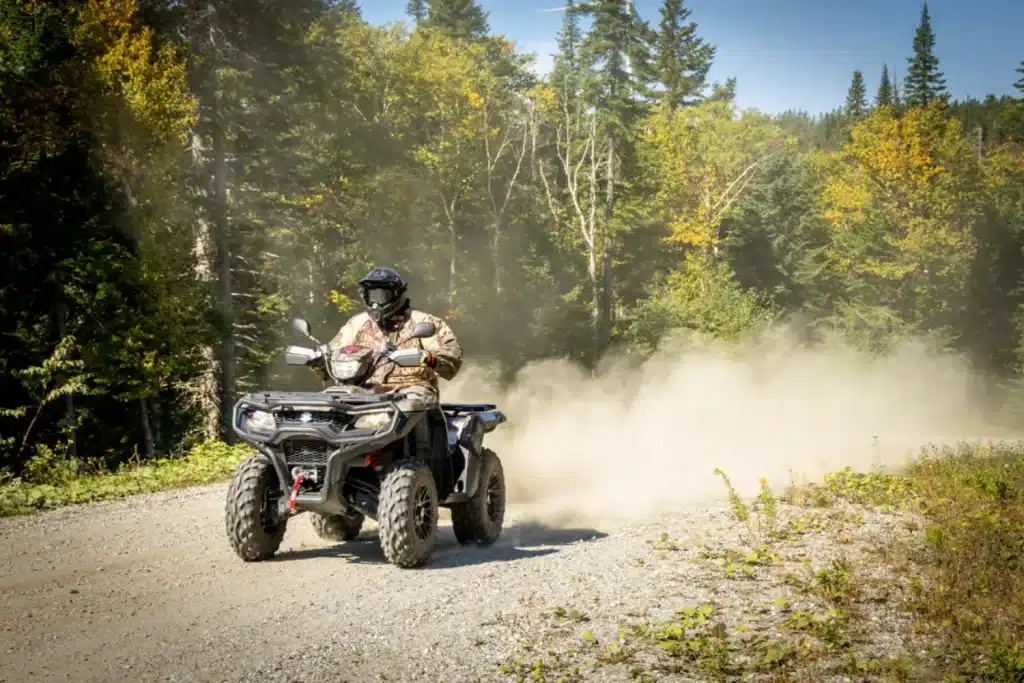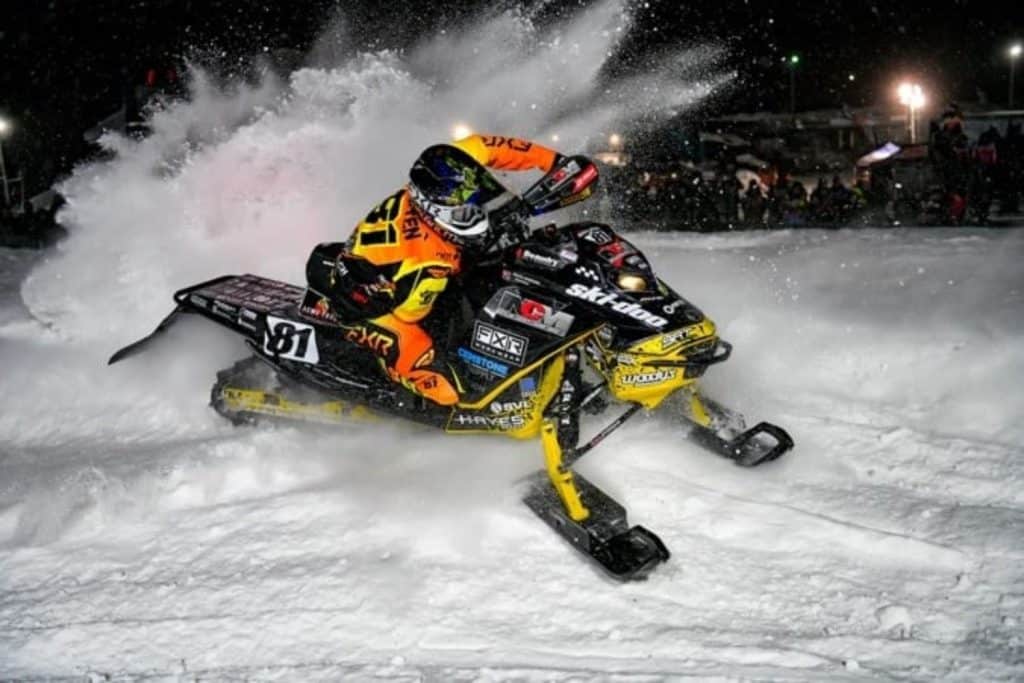True to its tradition of continuous innovation, Ski-Doo is once again offering several new models and technological innovations this season that are sure to please a large number of snowmobilers. 2018 marks the second year of the new 4th generation REV chassis and already, more than 62% of the manufacturer’s fleet is based on it in addition to the impressive Rotax 850 E-TEC engine. In this context, three models benefit from this orientation, including the MXZ X-RS which covers the extreme trail snowmobile segment. With several improvements that will make many Quebec enthusiasts happy, the Freeride has also received a major facelift. Appreciated by many hybrid enthusiasts, the Renegade Backcountry has not been forgotten either, with improvements targeted to its use. Among the technological innovations presented by Valcourt’s engineers, they revolutionized the world of starting and added another rear suspension in an area where BRP already has a well-stocked offering.
2018 Ski-Doo News
2018 Ski-Doo MZX X-RS
Known for years as one of the best extreme snowmobiles for rough trails, the new MXZ X-RS offers the perfect package for those looking for a superbly maneuverable, high-performance vehicle. Based on the same platform as the MXZ X, the X-RS benefits from several features that make it even sportier and more agile than previous years. Key elements of the new X-RS are the new REV-Gen4 chassis, new wider and flatter rear steps, a new steering column positioned 2 inches further forward, and the RAS-3 front suspension with 1 inch of extra travel and now equipped with new KYB-36 shocks.
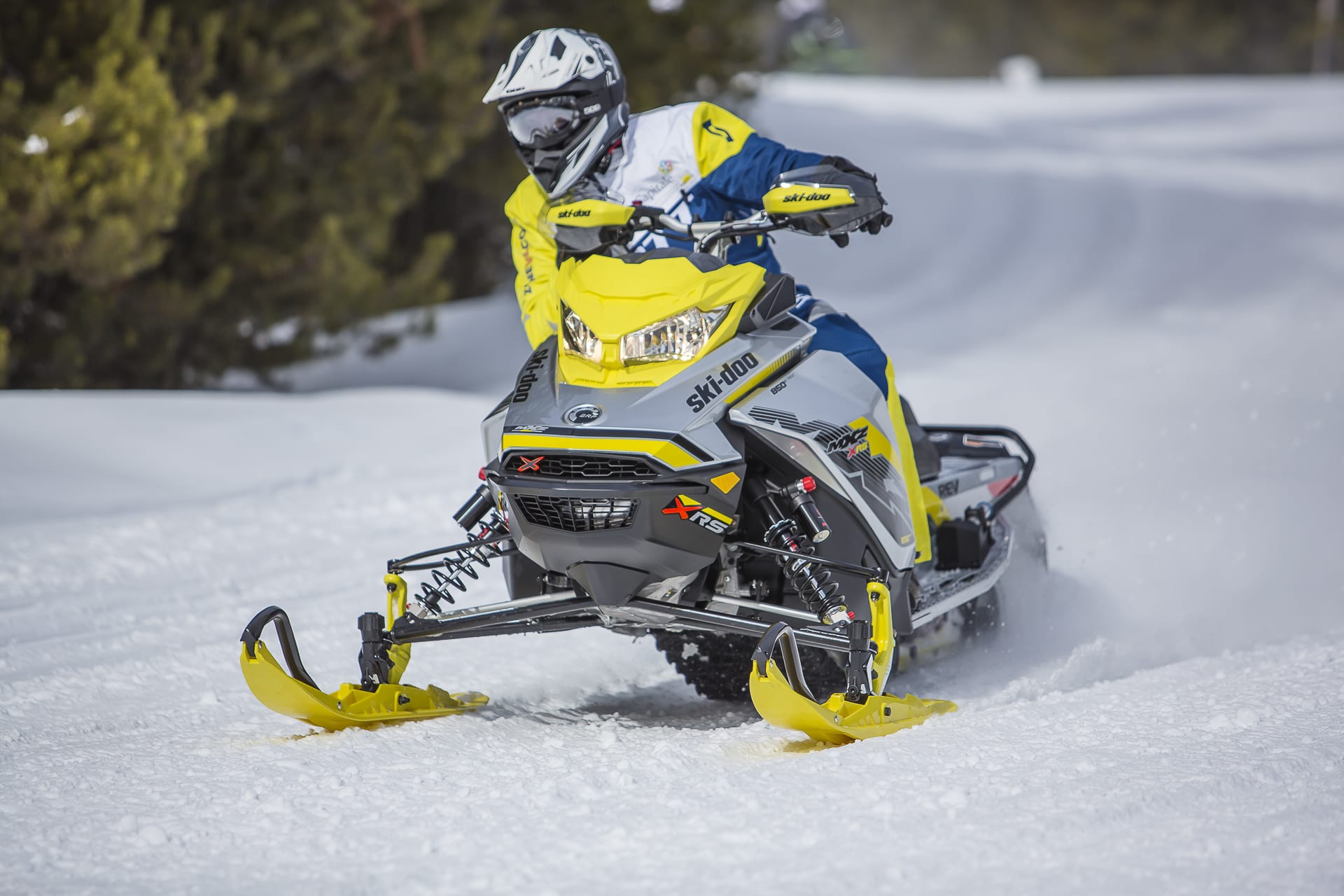
During my tests, this new snowmobile impressed me a lot on very rough terrain. Its high absorption capacity, without losing control of the vehicle, surprised many. What is also surprising is the working range of the suspension, which preserves the rider’s comfort in small bumps while being able to face very big ones. According to the folks at Ski-Doo, this has a lot to do with the choice of KYB-36 shocks (versus the KYB-40 in the past) at the front, which offer a wider working range with the RAS-3. As we know, we often have to get up quickly in the bumps, and the new handlebar position favors the sit-stand transition. The responsiveness of the 850 E-TEC combined with its agility and versatility make this snowmobile very enjoyable to ride, making it a top choice for the upcoming season.
2018 Ski-Doo Freeride
Popular with many Quebec snowmobilers, the Freeride has several new features for 2018, in addition to its new platform and engine. It seems that they want to make the Freeride even more versatile in the eastern and western markets of the continent by offering more choices of track lengths and more possible configurations. This is probably not unrelated to the success of this model in recent years, which, despite its focus on extreme off-trail snowmobiles, seems to appeal to a wide range of buyers. Highlights of the new Freeride are the new REV-Gen4 chassis, the new 850 E-TEC engine, the new 165-inch version, the new narrower ski gauge (36-38) for the 165 and 154 versions, the two choices of ski gauges for the 154 model (36-38/38-40) and the sea-level calibration option available only from the factory.
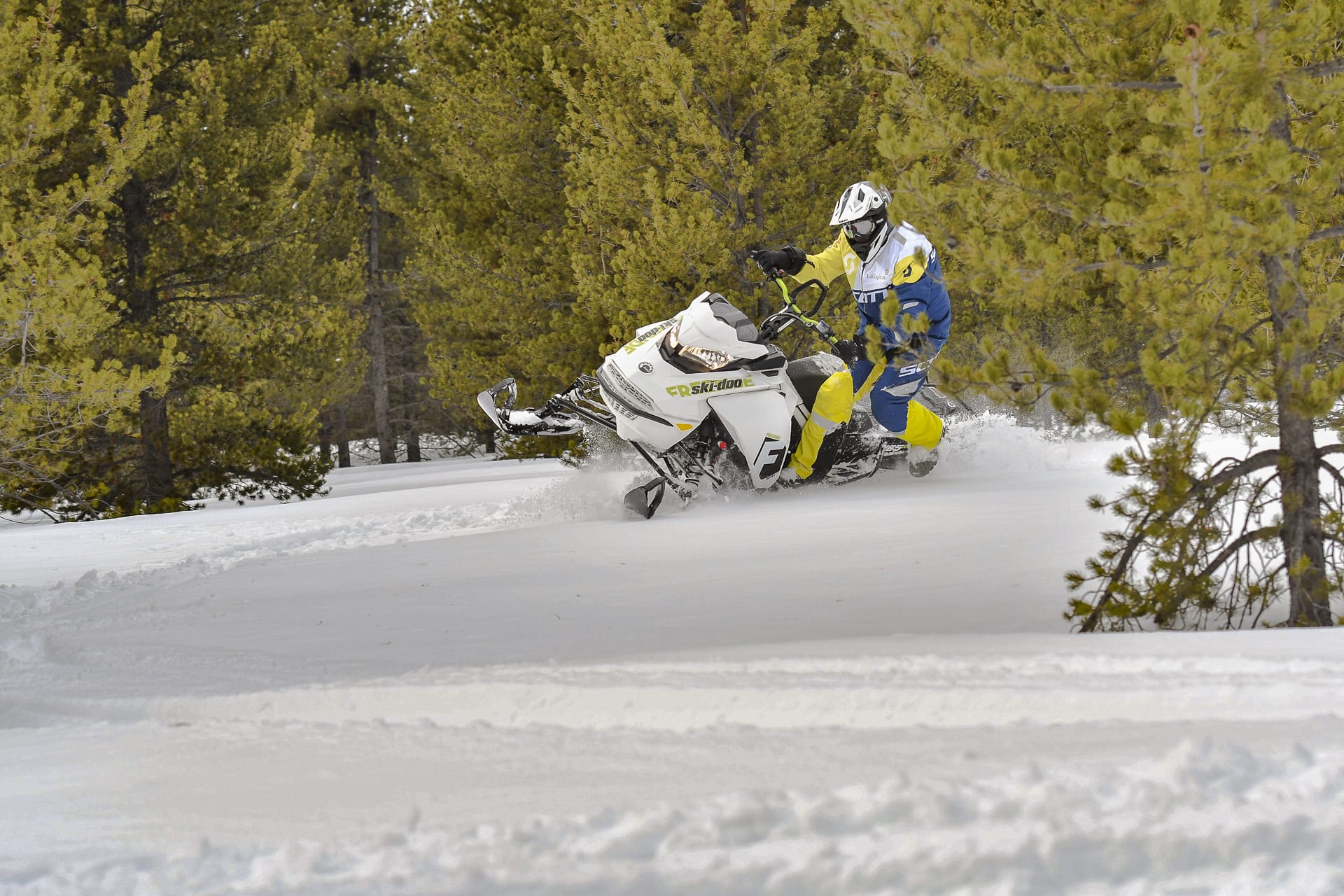
During my spring tests, I didn’t have much opportunity to test the Freeride in large quantities of powder. However, I was quickly able to make the comparison with the previous generation of Freeride. From the start, the difference is quite obvious between the reaction of last year’s 800R E-TEC and the new Rotax 850 E-TEC. For this type of vehicle, you are looking for a fast reaction speed rather than high speed, which is what the Freeride offers now. The other striking difference is the ease with which the vehicle can be controlled on sidehill climbs. In fact, it requires much less effort than on the XM chassis, and causes less fatigue to the rider during the day. But the big difference between choosing a Summit or a Freeride is its suspension equipped with KYB-PRO shocks, the same as on the MXZ X-RS. This gives the Freeride more versatility than the competition.
2018 Ski-Doo Renegade Backcountry and Backcountry X
The Renegade Backcountry is now available in the 850 E-TEC version on the new 4th generation REV platform. Also available in the X version, this snowmobile benefits from several evolutions making it even more interesting for future buyers of 146-inch tracked vehicles. Essentially, BRP engineers worked to find the best combination of components from the mountain snowmobile and hybrid segments. In this context, the key elements of this new snowmobile are the arrival of the new cMotion rear suspension, the availability of three types of tracks (Cobra and Ice Cobra 15x146x1.6 or Powdermax 16x146x2), the DS-2 mountain skis, as well as the RAS-3 front suspension.
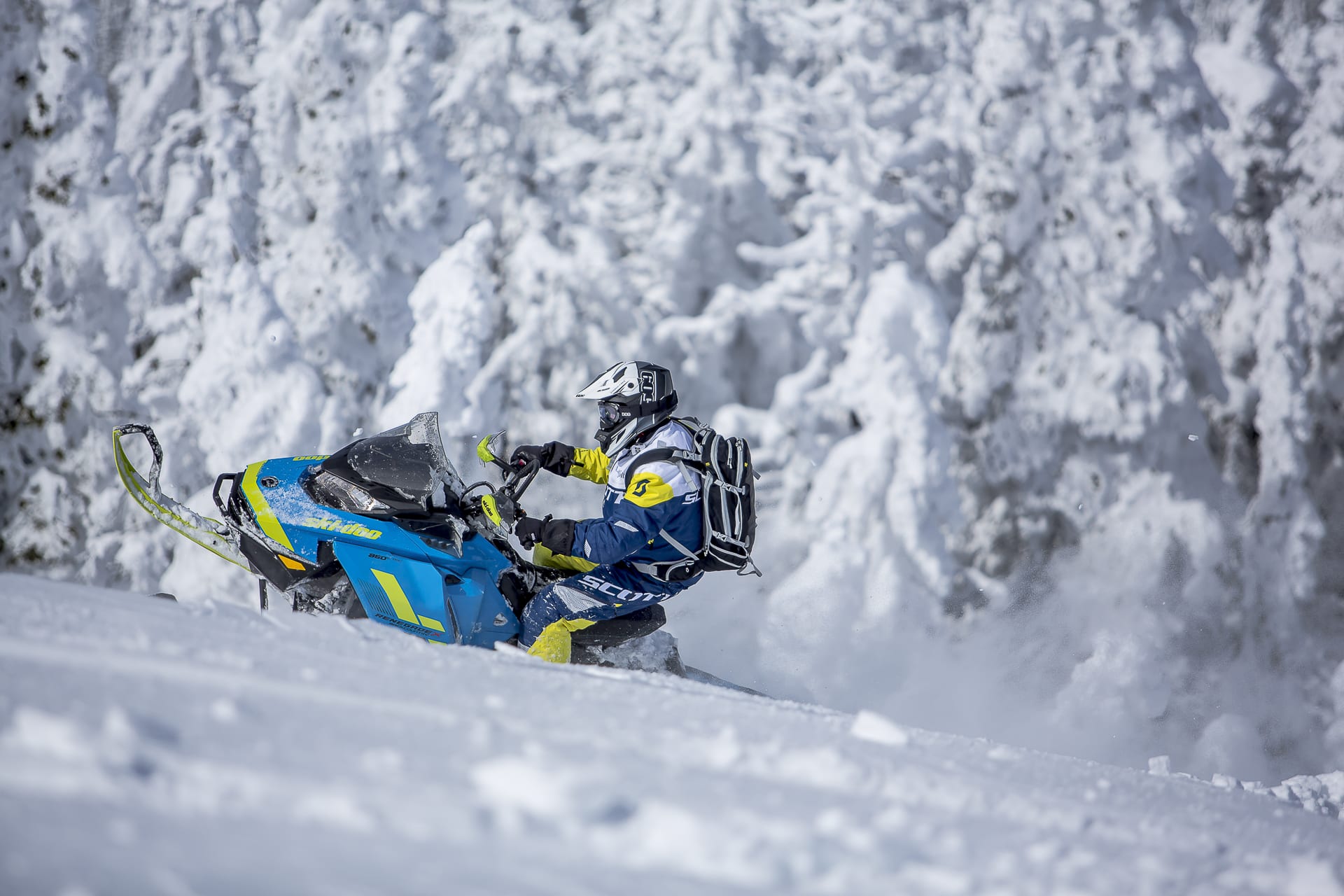
While I really like the Cobra tracks offered for this model, as they offer a lot of versatility, my testing was focused on the Powdermax. Despite the 2-inch studs, I was surprised by the Renegade’s behavior on the trails, with the new cMotion offering more stability on hard surfaces. The new Renegade is easy to control and very predictable in turns. During our off-road trips, the handling of the Renegade X simply charmed me. In a few minutes, you become comfortable on the vehicle, as it is very easy to handle in sidehill. Left and right movements are effortless and the quick response of the engine forgives some mistakes in terrain assessment. This is probably the ideal Ski-Doo snowmobile for those who want to learn how to ride off-trail, as it is easier to learn than many other vehicles on the market.
ETEC Shot starting system
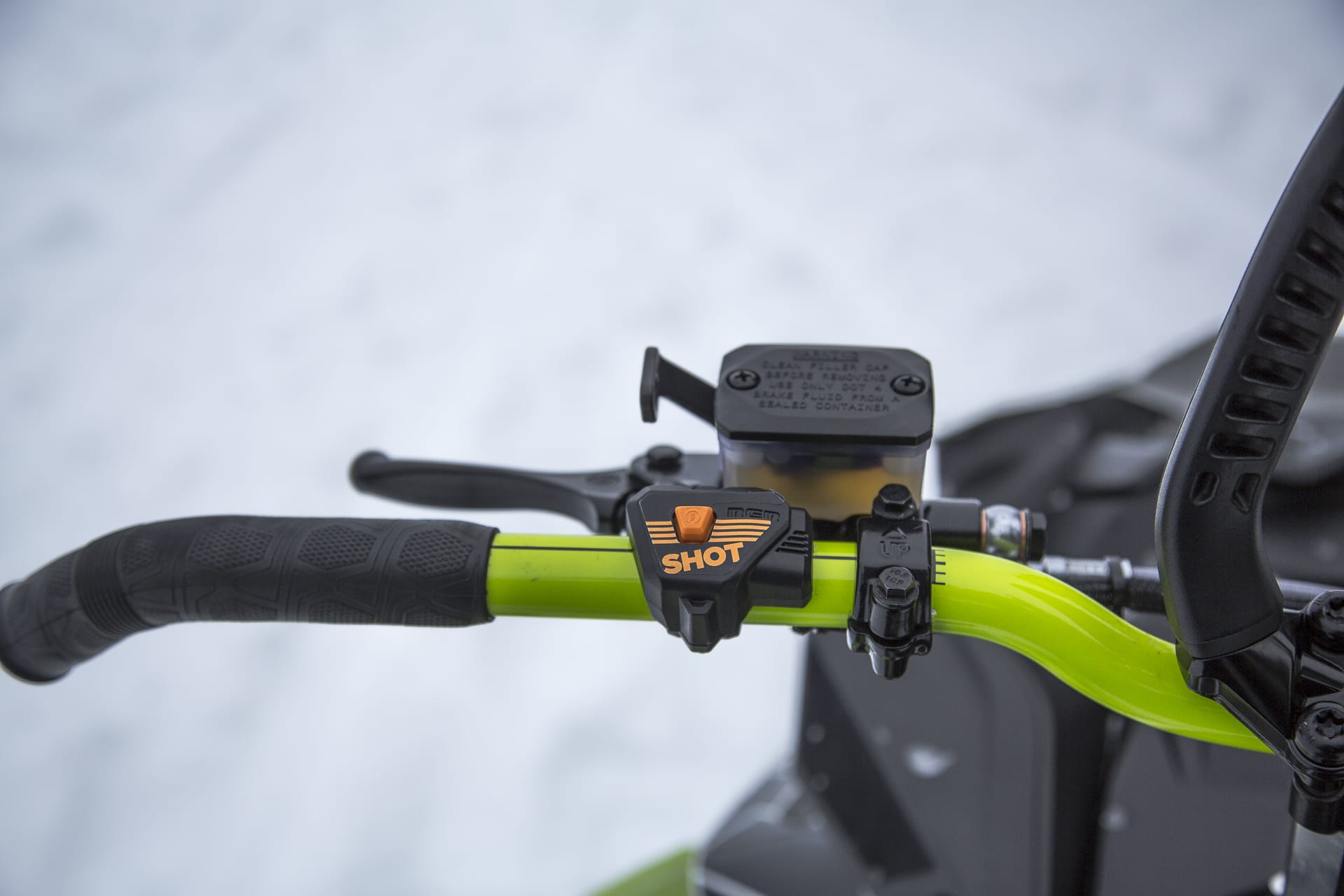
During the technical presentation day we had last March with the people from Ski-Doo, they were very proud to present their revolution in the field of assisted starting. The E-TEC-Shot system is only offered on off-trail snowmobiles and is installed from the factory. It offers a manual start in the morning and then is functional for the rest of the day if stops are officially no longer than 30 minutes. In fact, we have seen restarts after more than 45 minutes without experiencing any problems. BRP engineers have observed that mountain enthusiasts may stop and restart their snowmobiles 30 to 50 times a day, which is an extra effort for each manual start. The Shot system adds just 2 pounds to the vehicle compared to over 20 pounds for a traditional electric starter. The system only works with E-TEC because the engine starts in 1/3 of a revolution, which is impossible with a traditional engine. In addition, the key to the system is a super-capacitor that consists of fast-charging and fast-discharging batteries. In a few minutes in the morning, the batteries are at full capacity and the driver will not have to use the manual starter all day. When the starter is pressed, the system uses the power of the super-capacitor and feeds the magneto which becomes the starter to turn the engine. The result is impressive and without any of the “metallic” sounds typical of electric starting systems.
cMotion suspension
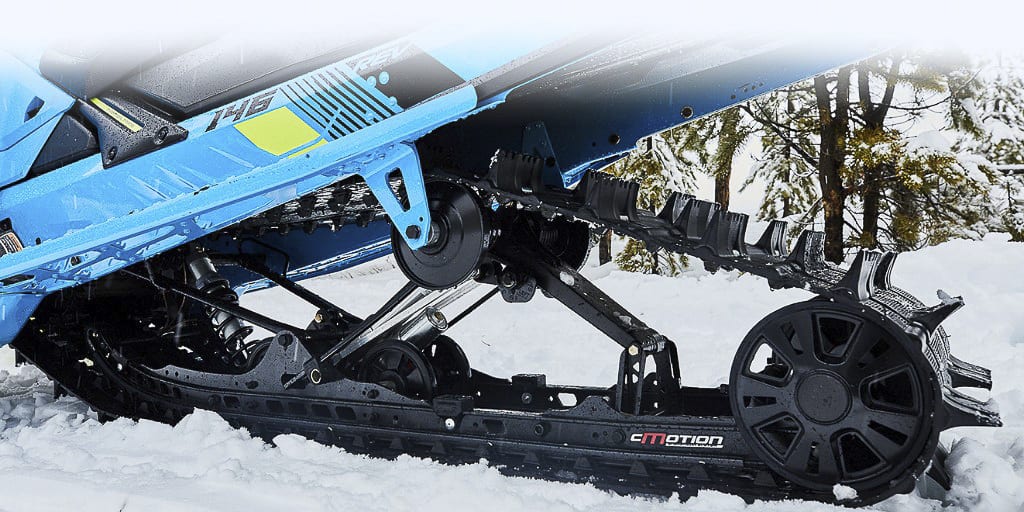
Since their arrival, the rMotion and tMotion rear suspensions have set the standard in the trail and mountain snowmobile market. When it comes to hybrids, BRP was always faced with a choice between these two suspensions, going against the compromise that the hybrid category tries to offer. The cMotion is the solution between these two solitudes by offering the best of both worlds. Available only in a 146-inch version, this uncoupled suspension features curved rear rails, no 4-degree lateral pivot point, and no Flexedge tracks. The goal is simple, to give maximum stability on the trails while maintaining the qualities of the uncoupled suspension in the powder. As my testing of the new Renegade Backcountry showed, I really liked the behavior of this new suspension. I won’t be surprised to see it extended to other models next year, like some of the Freeride models, because of the benefits it provides.


